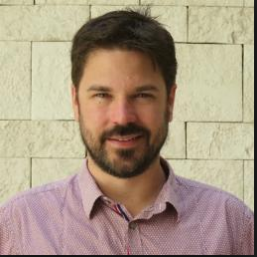

题 目:Multiphysics simulations of electrochemical devices using pore network modeling
时 间:2018年7月12日13:00-14:30
地 点:机械与动力工程学院F103
邀请人:吴睿副教授(工程热物理所)
Biography
Jeff Gostick is currently an Associate Professor in Chemical Engineering at the University of Waterloo. He received his undergraduate degree from Ryerson University in Toronto in 2000 and his Master’s degree from University of Waterloo in 2002. Prior to beginning his PhD, he worked as a Research Engineer at Teck Resources Inc. on the production of zinc powder and fiber for zinc-air flow batteries and large-scale alkaline batteries. His PhD work at the University of Waterloo, under the supervision of Michael Fowler and Mark Pritzker in collaboration with Marios Ioannidis, focused on multiphase transport in the porous electrodes of the hydrogen fuel cell. Upon completion of his PhD in 2009 he did 1 year of post-doctoral work at Lawrence Berkeley National Lab under Adam Weber, performing X-ray tomography on porous materials using the Advanced Light Source synchrotron. He joined the Department of Chemical Engineering at McGill University in 2010 where he runs the Porous Materials Engineering & Analysis Lab. His current research continues to include fuel cell electrodes in collaboration with industrial partners, but has expanded to include all manner of engineered porous materials ranging from electrospun nanofiber webs for flow battery electrodes and tissue scaffolds, to nanoporous zeolite materials for carbon capture. He is also a lead developer of the open source pore network modeling project OpenPNM (openpnm.org).
Abstract
Grid-scale energy storage and electrification of the transportation sector have been central issues in the transition to a renewable energy economy. The transport processes in electrochemical devices such as fuel cells, electrolyzers, redox flow batteries and solid-state secondary batteries are complex, occurring in multiple phases (both solid and void), highly coupled, and involve several length scales. In conjunction with this complexity, the physical structure of the electrodes plays an overwhelmingly large role in the cell performance. Transport in the various phases requires that each form a highly connected percolation path, but this requirement is difficult to satisfy for all phases simultaneously. Pore-scale modeling of these systems is an excellent means to study transport and understand the impact of structure, but the computational resources required to do a true pore-scale model limit the size of domain to essentially a single scale. Pore network modeling, by abstracting the void (and solid) structure as a network of simple resistance, can reduce computational cost by several orders of magnitude while maintaining the essentials of the structure and the phase interactions. This not only introduces the possibility of simulating meaningfully large domains (in some cases the entire device), but also enables inclusion of more complex physics. This talk will give an overview of recent advances made in incorporating multi-physics-based calculations into a pore network framework (OpenPNM) including transient phenomena, complex reaction kinetics, and including the solid phase transport via dual extraction of solid and void networks from tomography images.